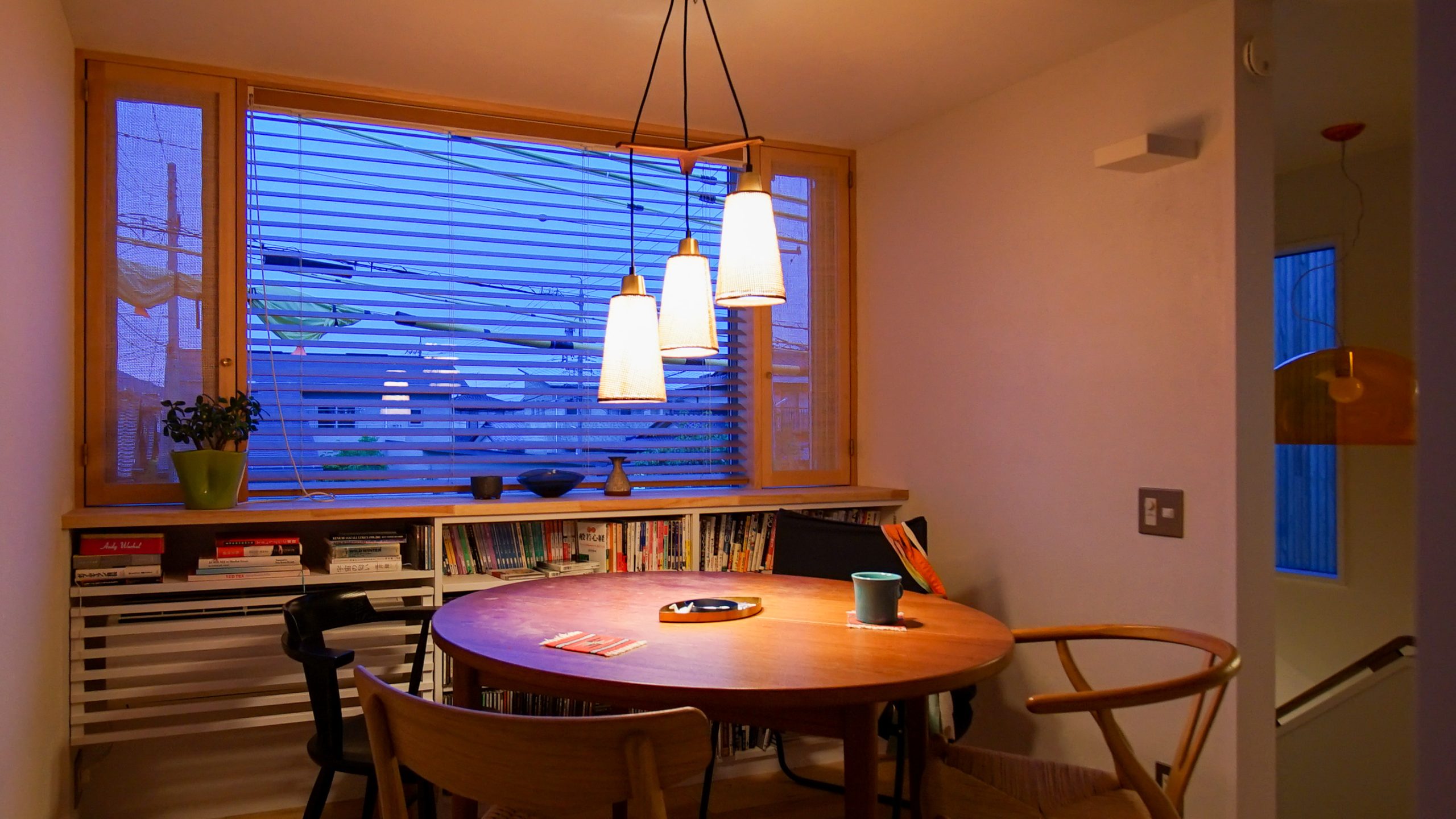
人間が火を手に入れたことは、文明の始まりであり、中心が生まれた瞬間だった。
火によって食べ物を調理し、消化にかかる時間は大幅に短くなった。 そのおかげで、他の動物よりも短い時間で多くのカロリーを摂取できるようになり、 残された時間を狩りや道具づくり、そして農業や技術の発展へと費やすことができた。
火は単なるエネルギー源ではなく、人間に文化の火をともしたのだ。 原始時代の暮らしの中心には、いつも火があった。 火は家族を、仲間を、集団をひとつにした。 それを囲んで食事をし、寒さをしのぎ、昔話や伝説が語られ、 ときに火は儀式や祭りの始まりでもあった。 火のまわりに人が集まり、そこに言葉と文化が生まれた。
電気が生活に入り込む以前、家の中には“生きた火”があった。 かまどの火、囲炉裏の火。 それらは暖をとるだけでなく、 家全体をゆるやかに温めていたのかもしれない。昔の家は、いまの住宅ほど気密性も断熱性も高くはなかった。
それでも冬を越せたのは、火という有機的な熱源が、家全体をゆるやかに包んでいたからだろう。炎の明滅は、家の呼吸のようでもあり、そこに人の気配と暮らしのリズムが重なっていた。火は、物理的な熱以上に、人と家とを結びつける生命のようなものだった。
それはまるで心臓のようだ。その鼓動に耳を澄ませるように、人は自然と火のそばに集まり、静かに一日の終わりを過ごしていたのかもしれない。
現代の住宅には、そうした生々しい火はなくなった。 火は完全にコントロールされ、ガスや電気へと姿を変えた。 安全で効率的になった代わりに、火が持っていた“ゆらぎ”や“中心性”は失われた。 家の中心には、もはや燃えるものはない。 火は人々が自然に集まるための舞台装置だったのかもしれない。
それでも、いまの家の中には、かすかにその名残がある。
食卓を照らす照明の光。人の顔をやわらかく照らし、背景に闇をつくるその光景は、どこか原始時代の火の記憶に似ている。食べるという行為は、人間がどれほど進歩しても、最も原始的な営みのひとつだ。火を使い、光のもとで食を囲む。その繰り返しの中に、私たちは安心とつながりを見いだしてきたのだろう。
家族が光の下に集い、食卓を囲む。その構図は、火を囲んでいた人々の姿と重なって見える。中心があるから人は集い、集うことで関係が生まれる。
それは原始時代も現代も変わらない、人間の根源的な営みだ。 火はかたちを変えながらも、 いまもなお、建築のどこかで私たちを結びつけているのかもしれない。
When humankind first mastered fire, it marked not only the dawn of civilization,
but the moment when the idea of a center was born.
By cooking food with fire, the time needed for digestion was greatly reduced.
This allowed humans to consume more calories in less time than other animals,
and to devote the remaining hours to hunting, toolmaking,
and eventually to the development of agriculture and technology.
Fire was not merely a source of energy —
it was the spark that ignited human culture.
In the primitive age, fire was always at the heart of life.
It gathered families, companions, and tribes into one circle.
People ate around it, warded off the cold, told stories and legends,
and sometimes began rituals and festivals beside it.
Around the fire, people gathered — and from that gathering,
language and culture were born.
Before electricity entered daily life, there was living fire inside the home:
the flame of the hearth, the glow of the irori.
They provided warmth, but perhaps also gently heated the whole house.
Old houses were far less airtight and insulated than today’s,
yet somehow, families endured the winter.
It may have been because fire, that organic source of heat,
enveloped the home in a soft embrace.
Its flicker was like the breathing of the house itself,
layered with the rhythm of human presence and everyday life.
Fire was more than physical warmth —
it was a living pulse that bound people and their homes together.
It was like a heart.
Listening to its quiet beat, people naturally gathered near it,
and there, they spent the peaceful end of the day.
In modern houses, that living fire has disappeared.
Fire has been fully controlled, transformed into gas and electricity.
In exchange for safety and efficiency,
we have lost the gentle flicker and sense of center that fire once gave us.
At the heart of the home, nothing burns anymore.
Perhaps fire was a stage —
a device that naturally drew people together.
And yet, a faint trace of it still remains in our homes today.
The light that shines over the dining table —
it softens faces and casts gentle shadows into the room,
evoking a distant memory of ancient fire.
Eating, after all, remains one of the most primitive human acts,
no matter how far civilization advances.
To cook with fire, to gather under light, to share a meal —
in these repetitions, we have long found comfort and connection.
Families gather under light, encircling the table.
That composition mirrors the image of people once gathered around a flame.
Because there is a center, people gather;
and through gathering, relationships are born.
That has not changed from the prehistoric age to the present day.
Fire, though transformed in form,
still connects us — quietly, somewhere within architecture itself.
